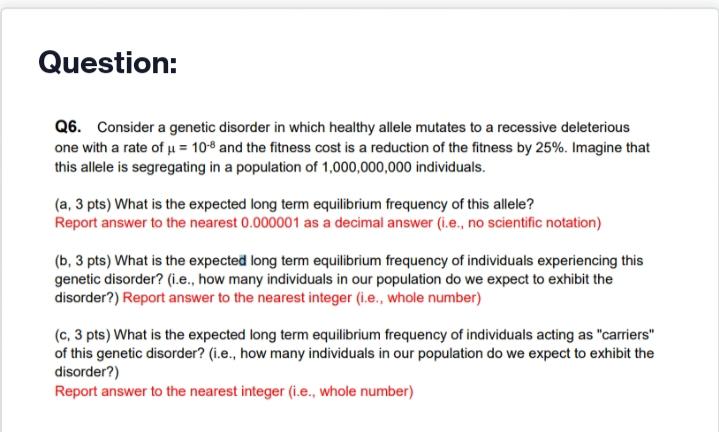Answered step by step
Verified Expert Solution
Question
1 Approved Answer
Question: Q6. Consider a genetic disorder in which healthy allele mutates to a recessive deleterious one with a rate of u = 108 and

Question: Q6. Consider a genetic disorder in which healthy allele mutates to a recessive deleterious one with a rate of u = 108 and the fitness cost is a reduction of the fitness by 25%. Imagine that this allele is segregating in a population of 1,000,000,000 individuals. (a, 3 pts) What is the expected long term equilibrium frequency of this allele? Report answer to the nearest 0.000001 as a decimal answer (i.e., no scientific notation) (b, 3 pts) What is the expected long term equilibrium frequency of individuals experiencing this genetic disorder? (i.e., how many individuals in our population do we expect to exhibit the disorder?) Report answer to the nearest integer (i.e., whole number) (c, 3 pts) What is the expected long term equilibrium frequency of individuals acting as "carriers" of this genetic disorder? (i.e., how many individuals in our population do we expect to exhibit the disorder?) Report answer to the nearest integer (i.e., whole number)
Step by Step Solution
★★★★★
3.44 Rating (151 Votes )
There are 3 Steps involved in it
Step: 1

Get Instant Access to Expert-Tailored Solutions
See step-by-step solutions with expert insights and AI powered tools for academic success
Step: 2

Step: 3

Ace Your Homework with AI
Get the answers you need in no time with our AI-driven, step-by-step assistance
Get Started


